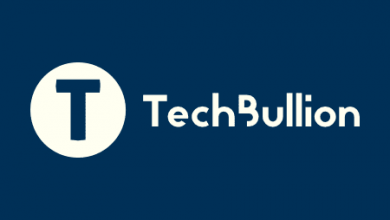How visual design decisions can make or break go-to-market execution

Author: Taiefa Tabassum
A creative and performance-oriented marketing professional with 6+ years of experience across tech, FMCG, fashion, legal, and industrial sectors. Taiefa blends a strong foundation in visual design with strategic marketing execution — having launched high-performing multi-channel campaigns, developed SaaS go-to-market strategies, and led content initiatives that drove measurable growth in both startup and corporate settings.
Visuals carry more weight in go-to-market than ever. It is not optional anymore: 88% of marketers planned to increase or maintain investment in various visual formats last year, proving that first visual impression often decides whether your GTM lands or fades. Visuals became a front door to any launch: when a prospect first encounters a campaign – a pre-launch page, an ad, or a sales email – what they feel visually sets the lens for all that comes next. The emotional tone you create through design ends up shaping how people interpret everything that follows, whether the product feels exciting, trustworthy, premium, or just “not for them.”
I’ve seen this play out in both startup launches and large-scale campaigns. We’d often spend just as much time shaping the emotional temperature of key visuals as we did writing copy — because what people feel visually has to match what you’re promising functionally. If your design tone feels premium but the onboarding is scrappy, or if you’re using vague imagery alongside overloaded messaging, it slowly chips away at trust. Such disconnect makes users unsure, and unsure users rarely convert.
It’s also not the color palette alone that makes or breaks a campaign, but what you choose to visually highlight. Does the design help users immediately grasp what the product does? Does it clearly illustrate the pain point or a meaningful outcome? Or does it drown in abstract imagery and tech jargon? The visuals that usually resonate well are the ones that illustrate those pain points and outcomes clearly. The feature you try to show can be great, but if the user can’t see how it helps them from the first scroll, they won’t stick around to figure it out. So here is my first rule.
Clarity before cleverness
You want to excel in your GTM campaign? Always put clarity first. The biggest risk in GTM creative is over-styling the asset before the message is fully locked in. Define your “main hero”, hero element of the creative (a key feature, benefit, or CTA) and let all other elements serve that focus. For instance, if you show the product, don’t hide it in a busy scene. If you show the benefit, don’t cover it in copy-heavy layouts. Things like copy weight and cropping, design placement and whitespace make a huge difference in digital campaigns. A lot of clarity is lost when headline text is too light to scan, or when visuals are over compressed. Similarly, a cropped UI screenshot that just shows three key benefits might perform better than a full dashboard view, which can overwhelm new users.
In the end, your design shouldn’t just look intentional, it should be read intentional too. If someone can glance at the ad and understand what you offer and why they should care, you’ve done your job.
Simplification for Amplification
Simply defining your main asset is not enough. Resist the temptation to showcase everything at once, especially in a tight schedule – focus on this “hero”. The more you remove from the scene, the more the impact the core message has, and the more you can show in the future.
Radical simplification can sometimes drastically shift your GTM campaign from confusing to compelling. In one go-to-market plan my team and I worked on, a new content tool designed for lean marketing teams was initially presented with feature-dense visuals: automated workflows, multi-language support, personalization layers, advanced scheduling logic, etc. Technically impressive, no doubt, however surveys and test runs conducted with our target ICP revealed that the messaging felt too broad and indistinguishable. Users struggled to pinpoint what was new or valuable, describing the visuals and tone as “familiar” or “like any other email tool.”
We pivoted by stripping the story to the essence: instead of marketing a stacked toolset, we consolidated the visual story around its unique differentiator: the ability to instantly convert news articles and YouTube content into real, usable email campaigns with minimal input. We cropped UI shots, focusing on the “moment of automation” and centered our story around outcomes, not backend logic (like it was in the first iteration).
The lesson was clear: complex tools don’t need complex storytelling upfront. They need specificity, care, and enough breathing room for the core value to resonate. In your GTM designs you should never try to represent everything upfront. Instead, here are three rules which can help you in planning your GTM:
- Anchor the first impression in your product’s most immediate value;
- Strip anything that creates ambiguity or looks like generic category noise;
- And sequence the rest of the story based on user curiosity, not internal priorities.
Tailoring Design across Channels
After choosing the focus of the campaign, I usually start by breaking the campaign down into layers of messaging:
- What’s the emotion we want to trigger?
- What’s the proof or validation that supports it?
- What’s the action we want them to take?
These three layers stay consistent throughout the campaign, but how they show up visually depends on the platform. Basically, instead of designing one asset and forcing it everywhere, we should adapt those visuals to the chosen platform’s logic. For instance, professional networks like LinkedIn or launch sites like Product Hunt favor authenticity. Users scroll past anything too polished or seemingly over-produced. Campaigns with simple design, real UI screenshots and founder-driven narratives work best there.
By contrast, paid ads on socials demand instant CTA. You should nest the main message right into the visual, the design hierarchy needs to be sharp, and your call to action should be unavoidable, because conversion is a goal here.
For things like event branding or OOH, the challenge is different. Viewers have only a short period of focus (2-3 seconds), and you’re placing visuals in spatial environments where distractions are high. Color contrast becomes crucial there. You either go bold to stand out in a noisy visual space, or hyper-minimal so key text or imagery cuts through instantly.
Across all of this, maintain a consistent thread. The campaign should look cohesive across channels, but not necessarily identical. Different surfaces have different strengths, so design has to serve the context while staying grounded in the same strategic spine.
Measuring Visual Impact
Finally, you want to know if your strategy is effective or not. I usually track 3 following metrics:
- Conversion proximity: Do visual tweaks lead to measurable improvements in time on page, form completion, or scroll-through depth?
- Message alignment: After a campaign, do prospects repeat the headline or value proposition back to you? If people remember what you said, your message has stuck.
- UGC/Micro-feedback: Look for signals that your creative resonated. If people screenshot, save, or share a visual asset (even internally), that usually means it works as intended.
At the end of the day, go-to-market success isn’t just about the message you write – it’s about the story people see. Visuals are the first handshake with your audience. They set the mood, frame the promise, and decide whether someone leans in with curiosity or drifts away. The best launches are not the ones that try to sell everything at once, they’re the ones that make the value feel obvious and the story feel simple.
So, keep your GTM campaigns clear, adapt it to where your audience is, and turn your product into something people actually want to try with excellent visuals.


